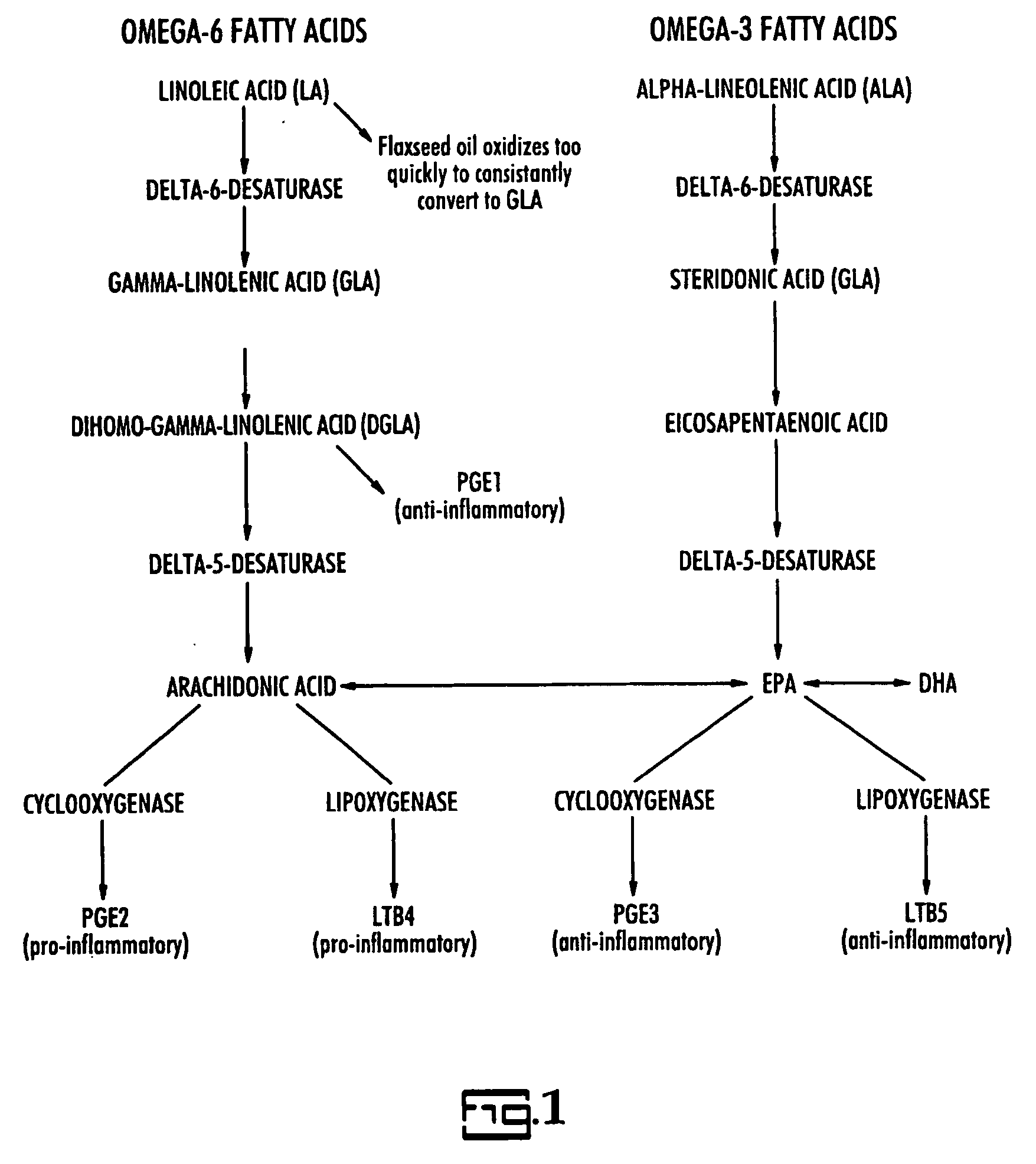Treatment for dry eye syndrome
a dry eye syndrome and treatment method technology, applied in the field of eye disorders, can solve the problems of eye disorders, poor wetting or glycation of the corneal surface, subsequent desiccation and epithelial damage, etc., and achieve the effect of relieving chronic inflammatory changes of the eye and more assured potency
- Summary
- Abstract
- Description
- Claims
- Application Information
AI Technical Summary
Benefits of technology
Problems solved by technology
Method used
Image
Examples
Embodiment Construction
[0041] The present invention is an improved formulation for the treatment of the underlying inflammatory processes that cause dry eye syndrome. Through the oral administration of a blend of omega-3 and omega-6 essential fatty acids, and nutrient cofactors necessary to enhance the metabolic conversion associated with the tear-specific series E-one anti-inflammatory prostaglandin (PGE1), the root causes of dry eye syndrome are addressed. Additionally, the formulation inhibits the production of pro-inflammatory compounds, as well as the growth of viral and bacterial pathogens of the three-layer tear film. Although this particular formulation is described in connection with the treatment of human dry eye syndrome, it is also intended that the formulation and could also be used for the treatment of dry eye syndrome among various animals, such as dogs. [It is known that various animals having, for the most part, a similar physiology of the eye to the human eye also suffer from dry eye syn...
PUM
| Property | Measurement | Unit |
|---|---|---|
| hydrophilic | aaaaa | aaaaa |
| wetting | aaaaa | aaaaa |
| water-soluble | aaaaa | aaaaa |
Abstract
Description
Claims
Application Information
 Login to View More
Login to View More - R&D
- Intellectual Property
- Life Sciences
- Materials
- Tech Scout
- Unparalleled Data Quality
- Higher Quality Content
- 60% Fewer Hallucinations
Browse by: Latest US Patents, China's latest patents, Technical Efficacy Thesaurus, Application Domain, Technology Topic, Popular Technical Reports.
© 2025 PatSnap. All rights reserved.Legal|Privacy policy|Modern Slavery Act Transparency Statement|Sitemap|About US| Contact US: help@patsnap.com

